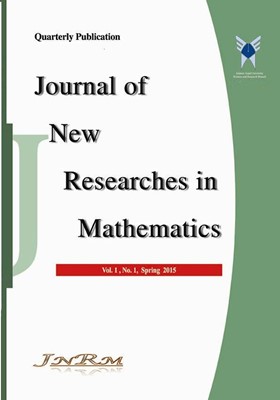استفاده از روش مونت کارلو در رابطه با ارزیابی DMU های کارای راسی
محورهای موضوعی : آمارغلامرضا جهانشاهلو 1 , مازیار زاهدی سرشت 2 *
1 - گروه ریاضیات، دانشگاه خوارزمی، تهران، ایران
2 - گروه ریاضیات، دانشگاه خوارزمی، تهران، ایران
کلید واژه: Data Envelopment Analysis, Efficiency, Ranking, Monte Carlo simulation, Supper-Efficiency, Cross- Efficiency,
چکیده مقاله :
تحلیل پوششی دادهها یک روش برنامهریزی ریاضی برای محاسبه کارایی واحدهای تصمیمگیری میباشد. زمانی که تحلیل پوششی دادهها نمره کارایی واحدها را بدست میآورد ممکن است تعدادی از آنها کارا شوند. حال این سوال پیش میآید از بین این واحدهای کارا کدام بهترین میباشد. واحدهای ناکارا را میتوان توسط نمره کاراییشان رتبهبندی کرد ولی برای واحدهای کارا باید روشی را ارایه کرد که آنها را رتبهبندی کند. روشهایی زیادی برای رتبهبندی واحدهای کارا ارایه گردیده است که هر کدام از آنها دارای معایب و مزایایی میباشند. Sexton روش Cross-efficiency را برای رتبهبندی واحدها کارا اراییه کرد که یکی از مشکلات بزرگ این روش جواب بهینه چندگانه در هرکدام از مدهایی میباشد که باید برای هر DMU حل شوند. ایراد دیگر این روش، وابستگی جواب مدل به جوابهای بدست آمده توسط واحدهای دیگر میباشد. یکی از روشهای پر کاربرد دیگر، Super-efficiency میباشد که توسط Anderson and Petersen ارایه گردید. این روش هم دارای معایب زیادی میباشد. نشدنی بودن، ناپایداری، وابستگی مدل به ماهیت ورودی یا خروجی و متغیرهای کمکی s مشکلات این روش میباشند که در مسایل خاص ممکن است اتفاق بافتد. در این مقاله ما روشی را ارایه کردهایم که هیچکدام از این مشکلات را ندارد و میتواند رتبه واحدهای کارای راسی را با محاسباتی ساده و با استفاده از روش The Hit or Miss Monte Carlo Method بدست آورد. در انتهای این مقاله برای نشان دادن کارایی روش خودمان مثالی کاربردی را ذکر کردهایم.
Data envelopment analysis (DEA) is a mathematical programming method for calculatingefficiency of decision making units (DMU). In calculating the efficiency score of unitsthrough DEA we may come up with some efficient units. But the question is among theseefficient units which of them is better. As we know, it is possible to rank inefficient unitsthrough efficiency score; however, for ranking efficient units it is not helpful and othermethods should be developed in these regards. To obviate this problem there have been somany attempts in the literature which have their pros and cons. Cross-efficiency method wasfirst introduced by Sexon et al. for ranking efficient units. The major problem of this methodis alternative optimal solutions in each model which must be solved for each DMU. Anotherproblem of this method is dependency of obtained solutions on the solution obtained by otherunits. Another method which has widely been used is super efficiency, presented byAnderson and Petersen. There are several flaws in their suggested method. Infeasibility,instability, dependency of the model on the input and output orientation and non-zero slackvariables are the weaknesses of this method which may occur in specific problems. Thisarticle is an attempt to present a method which does not have the aforementioned problemsand can be utilized to calculate the rank of extreme efficient units through using the Hit orMiss Monte Carlo method. At the end of the article some examples are made in order to showthe efficiency of the presented method.
[1] Charnes A., Cooper W.W. , Rhodes E. , Measuring the efficiency of decision making units. European Journal of Operational Research, 2(1978), 429–441
[2] Banker R.D., Charnes A., Cooper W.W., Some models for estimating technical and scale efficiencies in data envelopment analysis, Management Science ,30(1984), 1078–1092.
[3] Abello J.M., Pardalos P.M., Resende M.G.C. , Handbook of massive data sets. Kluwer, Dordrecht(2002).
[4] Sexton T.R., Silkman R.H , Hogan A.J, Data Envelopment Analysis: Critique and Extensions. in Measuring Efficiency: An Assessment of Data Envelopment Analysis. San Francisco: JosseyBass,(1986),73-105.
[5] Sungmook Lim,Minimax and maximin formulations of cross-efficiency in DEA, Computers & Industrial Engineering 62(2012), 726-731.
[6] Andersen P., Petersen N.C., A procedure for ranking efficient units in data envelopment analysis, Management Science,39(10)(1993), 1261-1294.
[7] Mehrabian S. , Alirezaee M.R., Jahanshahloo G.R.,Acomplete efficiency ranking of decisionmaking units in data envelopment analysis. Comput. Optim. Appl. ,14(1999), 261–266.
[8] Saati M.S., Zarafat Angiz M., Jahanshahloo G.R.,A model for ranking decision making units in data envelopment analysis. Ricerca Operativa 31(97) (2001), 47–59.
[9] Jahanshahloo G.R., Hosseinzadeh Lotfi F., Zhiani Rezai H., F. Rezai Balf, UsingMont Carlo method for ranking efficient DMUs. Appl. Math. Comput. 162(1) (2005), 371–379.
[10] Jahanshahloo,G.R., Afzalinejad,M, A ranking method based on a full-inefficient frontier, Applied Mathematical Modelling,30(2005), 248–260.
[11] Jahanshahloo G.R., Hosseinzadeh Lotfi F.,, Shoja. N., Tohidi G., Razavian S.,Ranking using L1 norm in data envelopment analysis. Appl. Math. Comput. 153(1) (2004), 215–224 .
[12] Amirteimoori. A., Jahanshahloo G.R., Kordrostami S.,Ranking of decision making units in data envelopment analysis. A distance-based approach. Appl. Math. Comput. 171(2005), 122–135 .
[13] Jahanshahloo G.R, Sanei M., Hosseinzadeh Lotfi F., Shoja N.,Using the gradient line for ranking DMUs in DEA. Appl.Math. Comput. 151(1) (2004), 209–219 .

